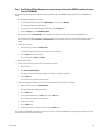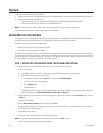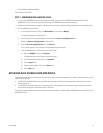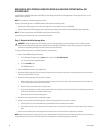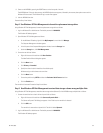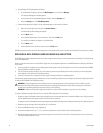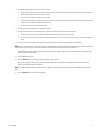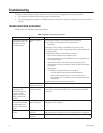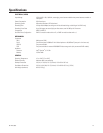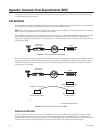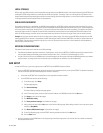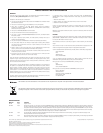C611M-C (3/06) 77
LOCAL STORAGE
ADR can only copy video that exists on the CompactFlash storage device (card or IBM Microdrive
™
). Pelco recommends setting the NET350 to use
the Ringbuffer (FIFO) storage method so it continually overwrites existing video. The storage “loop” has to be longer than the duration of the
longest network outage to be protected against. Note that several settings affect the storage duration, so consult your local Pelco representative
for storage estimation and the required size of the storage device.
SERIAL REPLENISHMENT
Once network connection is re-established, the NVR300 requests video from all NET350 recording streams that were interrupted. So as not to
overload either the network or the HDD storage array within the NVR300, the NVR replenishes from one NET350 at a time. The NVR replenishes
at the same speed as the original recording; that is, a five minute video clip takes roughly five minutes to replenish. The sequence of replenish-
ment might appear random as it depends on when the NVR re-establishes communication with the individual NET350s. While there is little
effect for individual outages, the serial nature of the replenishment must be taken into account for larger failures such as network switches.
Example: An eight-port network switch fails for five minutes due to a power outage. This switch has eight NET350s connected with the ADR
feature enabled. After the network is re-established, the NVR takes approximately 40 minutes (8 NET350s x 5 minutes) to replenish data for all
eight NET350s. (The actual time to replenish might vary by as much as 25 percent due to variances in time of detection, actual bandwidth to
store the video, and other factors.)
NETWORK CONSIDERATIONS
The network itself imposes two limitations on the ADR technology:
• The additional bandwidth required to transmit the “replenishment” stream from the NET350 to the NVR requires that the network link be
able to support double the bandwidth of the normally recorded stream; that is, 1024 kB if the recorded stream is 512 kB.
• In order to minimize CPU use, the NVR300 checks for network outages every five seconds. Although the NVR300 replenishes any network
outage it detects, an outage shorter than five seconds may not be detected and, therefore, may not be replenished.
ADR SETUP
In order for ADR to occur, you must properly set up the NET350T and the NVR300. Proceed as follows:
1. Set up the NET350T. The following steps provide an overview of the procedure necessary to set up the NET350T. For detailed information,
refer to the PelcoNET NET350 Installation/Operation manual as necessary.
a. Ensure that the NET350T has a CompactFlash card or compatible microdrive installed.
b. In the NET350T user interface, do the following:
(1) On the Home page, click Setup.
The Setup page appears.
(2) Click General Settings.
The General Settings configuration page appears.
(3) In the Timer server section, enter the time zone and IP address of the NVR300 and then click the Set button.
(4) Click Setup to return to the Setup page.
(5) Click Media Recording.
(6) Click Enter partitions settings! at the bottom of the page.
(7) Add a partition and then click the Set button on the Partition Settings page. When adding a partition, be sure to set the type of
recording to Ring Mode.
(8) Click Back to HD Scheduler page! at the bottom of the page.
(9) On the Time Recording page, set the NET350T recording schedule and then click the Set button.
(10) Click the Start button.
2. Set up the recording on the NVR300 (refer to the Programming a New Recording section in this manual). Be sure to select the Automatic
Data Replenishment feature.



